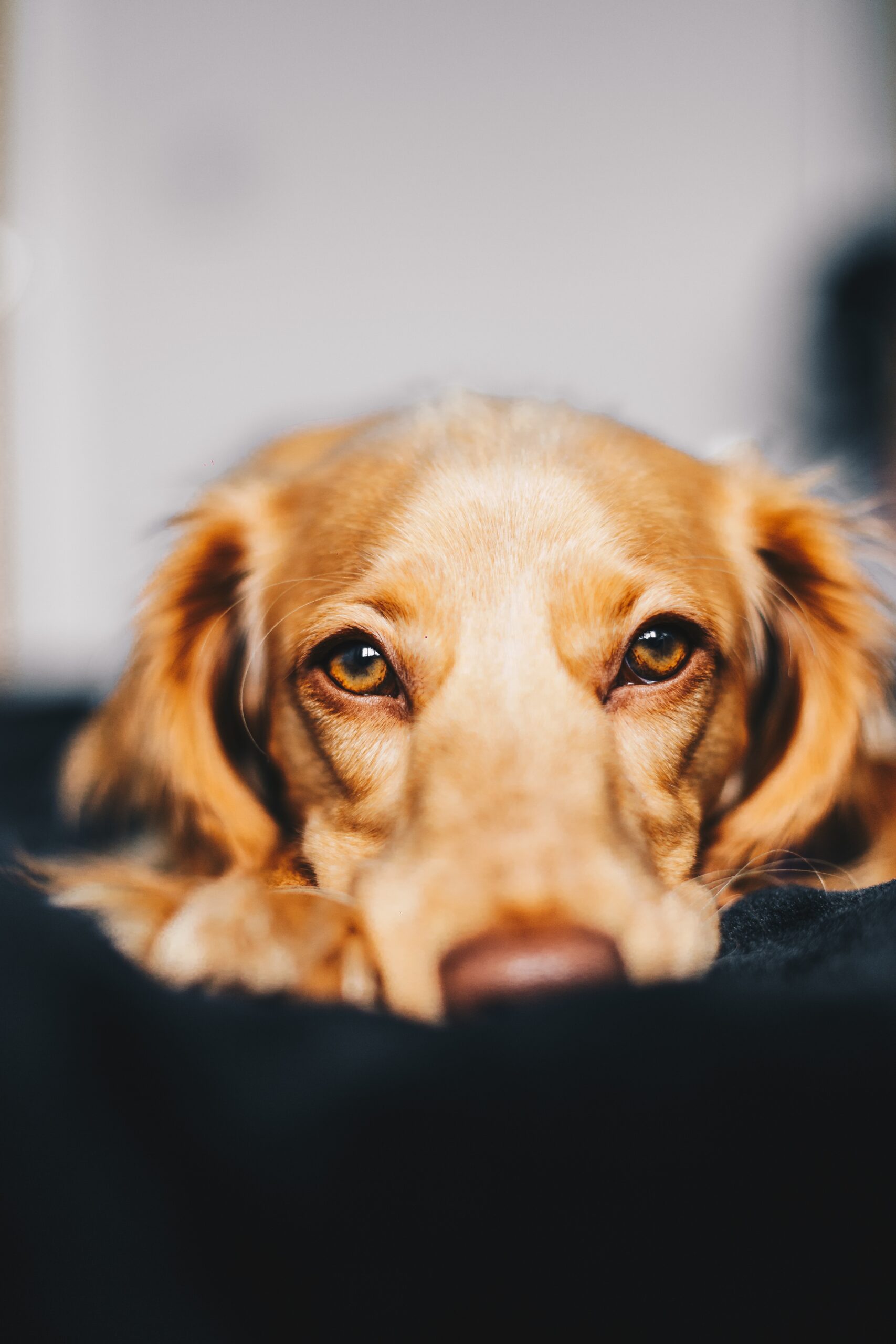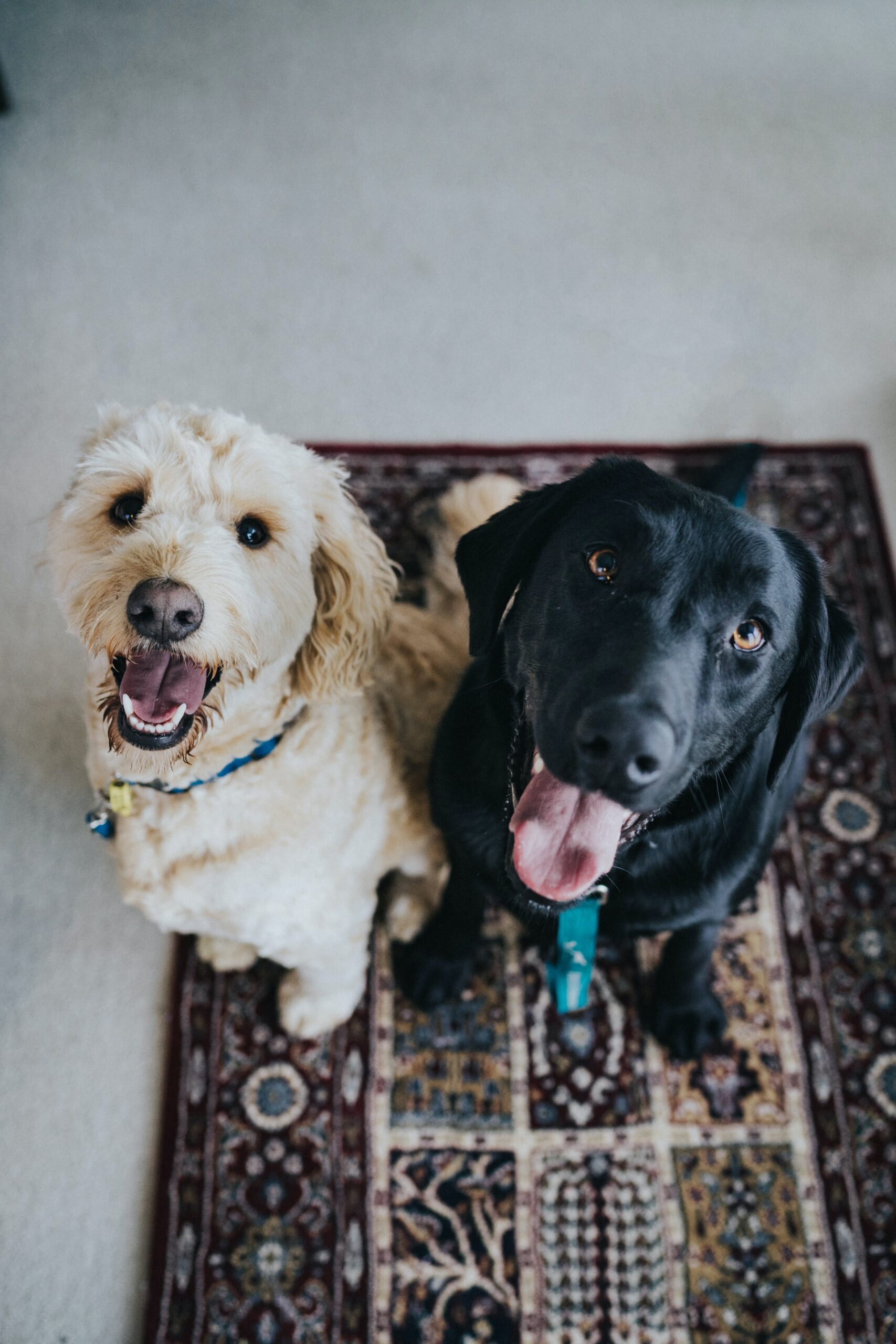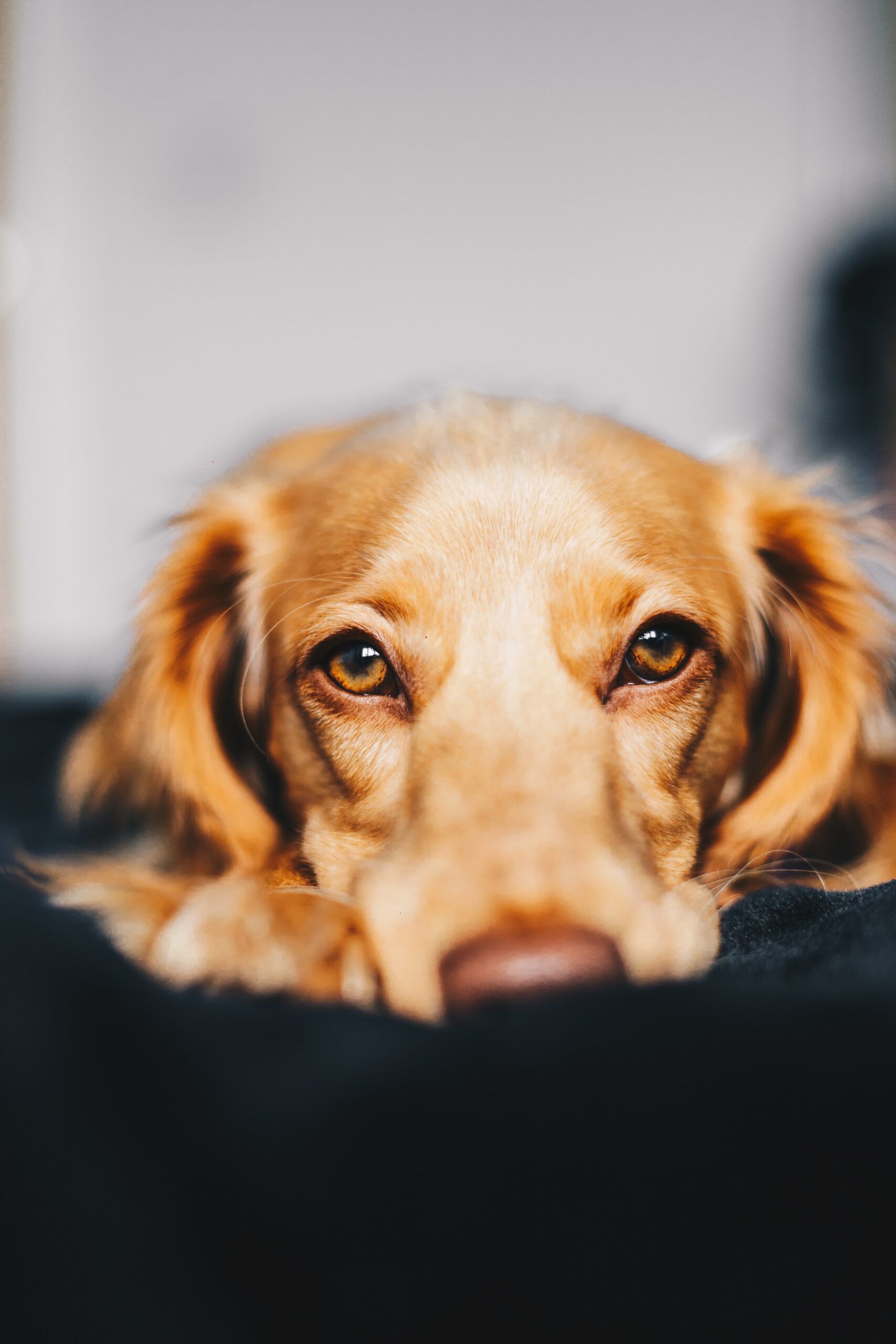If your furry best friend trembles with fear and whimpers at the sound of thunder, you’re not alone. Thunderstorm phobia in dogs is a common issue that can leave both pet and owner feeling helpless and distressed. However, there are several steps you can take to support and comfort your dog during these loud and scary moments. By understanding the source of their fear and implementing strategies to alleviate their anxiety, you can help your canine companion overcome their fear of thunderstorms and find peace amidst the stormy weather.

Understanding the Fear of Thunderstorms
The Nature of Thunderstorms
Thunderstorms are natural weather phenomena characterized by lightning, thunder, heavy rain, and strong winds. While some dogs may remain unbothered by them, many dogs experience fear and anxiety during thunderstorms. The loud noises, flashing lights, and atmospheric pressure changes can be overwhelming for our furry friends. Understanding why dogs fear thunderstorms is crucial in finding effective strategies to help them overcome their fear.
The Impact of Fear on Dogs
The fear of thunderstorms can have a significant impact on dogs both mentally and physically. Dogs may exhibit a range of fearful behaviors such as trembling, panting, pacing, hiding, or seeking comfort and attention from their owners. Some dogs may even become destructive or try to escape during thunderstorms. This fear can lead to long-term anxiety, affecting their overall well-being and quality of life. It is essential to address this fear early on to prevent it from escalating.
Identifying Fearful Behavior
To effectively help your dog overcome their fear of thunderstorms, it is crucial to recognize the signs of fearful behavior. Pay attention to their body language and behavior during storms. Look for signs of anxiety, such as cowering, excessive drooling, dilated pupils, or trying to hide in confined spaces. Vocalizations like barking, whining, or howling can also indicate fear. By identifying these behaviors, you can tailor your approach to meet your dog’s specific needs.
Creating a Safe Environment
Provide a Safe Space
Creating a safe and comfortable space for your dog can help alleviate their anxiety during thunderstorms. Set up a designated area, such as a crate or a quiet room, where your dog can seek refuge. Make sure this space is soundproofed to reduce the noise level from the thunderstorm. Add familiar blankets, toys, and items with your scent to provide a sense of security. Encourage your dog to use this space even when there are no storms, so they associate it with positive experiences and relaxation.
Utilize Calming Products
Various calming products can help ease your dog’s anxiety during thunderstorms. Consider using anxiety wraps, which provide gentle pressure and a sense of security. These wraps mimic the feeling of being held tightly and can be soothing to your dog. Other options include pheromone diffusers, such as Adaptil, which release scent signals that help dogs feel calm and relaxed. Consult with your veterinarian to determine the most suitable calming products for your dog’s specific needs.
Use Positive Reinforcement
Positive reinforcement is an effective tool for helping dogs overcome fear and anxiety. During thunderstorms, reward your dog for calm behavior and positive coping mechanisms. Use treats, praise, and affection to reinforce their bravery and resilience. By associating the storm with positive experiences, your dog will gradually develop a more positive response. Remember to remain calm and composed yourself, as dogs can pick up on their owner’s emotions and reactions.
Desensitization and Counterconditioning
Gradual Exposure to Thunderstorm Sounds
Desensitization involves gradually exposing your dog to the sounds of thunderstorms in a controlled and positive manner. Start by playing low-volume recordings of thunderstorm sounds and observe your dog’s reactions. Gradually increase the volume over time as your dog becomes more comfortable. This process helps them build tolerance and reduces their fear response. It is essential to proceed at a pace that your dog is comfortable with, ensuring they do not become overwhelmed.
Pairing Sounds with Positive Experiences
Counterconditioning involves changing your dog’s emotional response to thunderstorm sounds by associating them with positive experiences. During the desensitization process, pair the sound of thunderstorms with something enjoyable for your dog, such as their favorite treats, playtime, or a relaxing massage. This positive association helps to reframe their perception of the sounds, turning a negative experience into a positive one.
Professional Help for Desensitization
If you are unsure about how to conduct desensitization and counterconditioning exercises or if your dog’s fear is severe, seeking professional help is recommended. A qualified dog behaviorist or trainer can guide you through the process, offering expertise and tailored strategies to address your dog’s specific anxiety triggers. They can also provide feedback and adjustments as needed, ensuring the best possible outcome for your dog’s well-being.
Physical and Mental Exercises
Physical Activities for Anxiety Reduction
Physical exercise can serve as a natural outlet for anxiety and stress in dogs. Engage in regular exercise routines with your dog, such as daily walks, jogging, agility training, or playing fetch. By physically tiring them out, you can help reduce their overall anxiety levels, including their fear of thunderstorms. However, be mindful that during a thunderstorm, it is best to keep your dog indoors and engage in alternative calming activities.
Mental Stimulation Techniques
In addition to physical exercise, mental stimulation is essential for combating anxiety and fear. Engage your dog’s mind with puzzle toys, interactive games, obedience training, or scent work. These activities provide mental challenges, diverting their attention from the fear-inducing stimuli and helping them stay calm and focused. Mental stimulation also promotes mental exhaustion, which can contribute to better overall relaxation.
Relaxation Training
Teaching your dog relaxation techniques can be beneficial in managing their fear of thunderstorms. Practice deep breathing exercises with your dog, encouraging them to take deep, slow breaths and rewarding them for participating. Additionally, you can explore techniques such as massage, aromatherapy, or music therapy specifically designed to promote relaxation in dogs. These techniques can help your dog develop coping skills to manage their anxiety during stressful situations like thunderstorms.

Behavior Modification Techniques
Desensitization to Storm-Associated Triggers
Apart from the sounds, thunderstorms often come with other triggers that can intensify a dog’s fear, such as changes in atmospheric pressure or flashes of lightning. Desensitizing your dog to these triggers involves gradually exposing them to different elements associated with thunderstorms. For example, you can use recordings of thunderstorm sounds while simultaneously simulating changes in pressure or using a gentle flashlight to mimic lightning. The goal is to reduce the fear response by exposing your dog to these triggers in a controlled and positive manner.
Counterconditioning to Fear Responses
Counterconditioning helps your dog develop new, positive responses to previously fear-inducing stimuli. Rather than letting your dog engage in fearful behaviors, redirect their attention to an alternative task or behavior. For example, you can teach your dog to fetch a toy or perform a trick when they start showing signs of fear during a storm. By reinforcing positive behaviors, you can gradually replace the fear response with more desirable and stress-reducing actions.
Teaching Coping Strategies
Equipping your dog with coping strategies can empower them to manage their fear of thunderstorms independently. Teach your dog relaxation cues, such as “settle” or “go to your safe space,” that they can associate with calmness and security. These cues can be reinforced with rewards to strengthen the association between the command and the desired behavior. By providing your dog with coping mechanisms, you are enabling them to feel more in control during thunderstorms, reducing their anxiety levels.
Consistency and Routine
Establishing a Routine
Establishing a consistent routine can provide a sense of security and predictability for your dog. Stick to a daily schedule that includes regular mealtimes, exercise, play, and relaxation periods. During thunderstorms, try to maintain this routine as much as possible to create a familiar and stable environment. By doing so, you can help alleviate their anxiety by minimizing the disruption caused by the storm.
Consistent Training Approaches
Consistency in training approaches is essential when helping your dog overcome their fear of thunderstorms. Ensure that all family members are on the same page and follow the agreed-upon strategies and techniques. Inconsistency may confuse and further stress your dog, hindering their progress. By remaining consistent in your actions and responses, you provide a clear and predictable framework for your dog to navigate through their fear.
Predictability in the Environment
Creating a predictable environment can greatly assist dogs in managing their fear of thunderstorms. For example, you can use white noise machines or calming music to minimize the sudden and unpredictable sounds of thunderstorms. Close curtains and blinds to block out the flashing lights that may trigger anxiety. By reducing the elements of surprise and uncertainty, you can help your dog feel more secure and less anxious during storms.

Avoiding Reinforcement of Fearful Behavior
Ignoring Attention-Seeking Behavior
During thunderstorms, some dogs may exhibit attention-seeking behavior as a way to cope with their fear. It is important not to reinforce this behavior by providing excessive attention or cuddling. Although it may be tempting to comfort your dog, this can unintentionally reinforce their fear response. Instead, ignore attention-seeking behavior and focus on providing a calm and reassuring presence without rewarding their fearful actions.
Avoiding Coddling and Excessive Comfort
While it is crucial to provide support and reassurance to your dog during thunderstorms, it is equally important not to coddle them excessively. Excessive comfort may inadvertently reinforce their fear and prevent them from developing coping mechanisms. Instead, remain calm and composed, offering a reassuring presence without overindulging their fearful behavior. By finding the balance between support and encouragement, you can help your dog develop resilience and self-soothing skills.
Redirecting Anxiety into Focused Tasks
Redirecting your dog’s anxiety into focused tasks can help distract them from their fear during thunderstorms. Engage in activities that capture their attention and provide mental stimulation. For example, you can play interactive puzzle games, practice obedience training, or engage in trick training sessions. By redirecting their anxious energy into a productive and engaging task, you can help your dog shift their focus away from the storm and reduce their fear response.
Utilizing Medication or Supplements
Consultation with a Veterinarian
If your dog’s fear of thunderstorms is severe or significantly affecting their quality of life, it may be worth considering medication or supplements to help manage their anxiety. Consult with a veterinarian who can assess your dog’s specific needs and determine the most appropriate options. A thorough examination and discussion of your dog’s medical history will assist the veterinarian in making an informed decision regarding medication or supplements.
Prescribed Medications for Anxiety
In certain cases, medication may be prescribed by a veterinarian to help alleviate your dog’s anxiety during thunderstorms. These medications can range from short-term solutions for acute anxiety episodes to long-term options for chronic anxiety. It is crucial to follow the veterinarian’s instructions regarding dosage and administration to ensure your dog’s safety and well-being. Regular communication with the veterinarian will allow for monitoring of your dog’s progress and any necessary adjustments.
Natural Supplements for Calming Effects
Alternatively, natural supplements can be considered to provide calming effects for dogs during thunderstorms. Supplements such as melatonin, chamomile, or L-theanine have shown potential in reducing anxiety in dogs. However, it is important to consult with a veterinarian before introducing any supplements to your dog’s routine. The veterinarian can guide you in selecting the appropriate supplements and determine the recommended dosage based on your dog’s specific needs.

Seeking Professional Help
Consulting with a Professional Dog Behaviorist
If your dog’s fear of thunderstorms persists or worsens despite your efforts, consulting with a professional dog behaviorist is highly recommended. A behaviorist can conduct a thorough assessment of your dog’s behavior, identify the underlying causes of their fear, and tailor a comprehensive treatment plan. They will provide expert guidance and support throughout the process, ensuring the most effective strategies are implemented to help your dog overcome their fear.
The Role of a Dog Trainer
A dog trainer can also play a valuable role in helping your dog overcome their fear of thunderstorms. They can assist with obedience training, desensitization exercises, and teaching coping mechanisms. A trainer will work closely with you and your dog, providing hands-on guidance and feedback. They can address specific behavioral issues and help strengthen the bond between you and your dog, enhancing their overall well-being.
Therapy and Treatment Options
In some cases, more intensive therapy or treatment options may be necessary to address severe fear and anxiety in dogs. These options may include behavioral modification programs, cognitive-behavioral therapy, or even specialized services such as noise desensitization clinics. Consulting with a professional will help determine if these interventions are required and guide you in accessing the appropriate resources and support for your dog’s specific needs.
Monitoring Progress and Adjusting Strategies
Tracking Fear Levels and Responses
To gauge the effectiveness of your strategies and interventions, it is crucial to monitor your dog’s fear levels and responses during thunderstorms. Keep a record of their behavior, noting any improvements or setbacks. By tracking their progress over time, you can identify which techniques are most effective and make informed adjustments as needed. Remember that every dog is unique, and what works for one may not work for another, so it is important to adapt your approach accordingly.
Analyzing Effectiveness of Techniques
Regularly analyze the effectiveness of the techniques you are using to help your dog overcome their fear of thunderstorms. Assess whether there have been noticeable improvements in their anxiety levels and if their fearful behaviors have diminished. If certain strategies are not yielding the desired results, consider modifying or replacing them with alternative techniques. Flexibility and open-mindedness are key in finding the most effective approach for your dog’s individual needs.
Modifying Approaches if Necessary
It is essential to be adaptable in your approach, as what may work initially may need to be modified over time. Thunderstorm phobias can be complex, and it may take time to find the right combination of techniques that best address your dog’s fear. Stay proactive in seeking new information, learning about innovative methods, and consulting professionals when necessary. By remaining dedicated and open to adjusting your approach, you can help your dog overcome their fear of thunderstorms and improve their overall well-being.
In conclusion, understanding and addressing your dog’s fear of thunderstorms is crucial for their mental and physical well-being. By creating a safe environment, utilizing desensitization and counterconditioning techniques, providing physical and mental exercises, implementing behavior modification strategies, maintaining consistency and routine, avoiding reinforcement of fearful behavior, considering medication or supplements, seeking professional help when needed, and monitoring progress, you can help your dog overcome their fear and build resilience in the face of thunderstorms. Remember, patience and positive reinforcement are vital throughout this process. With your support, love, and understanding, your dog can learn to face thunderstorms with confidence and calmness.





